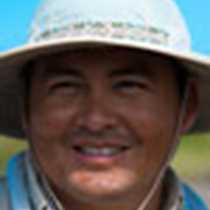Isabela Island
One more exceptional day in paradise!!! Today we were living a dream in one of the most conspicuous islands in the Galápagos Archipelago. Isabela Island is the largest island of the Galápagos with an area of 4,640 square kilometers (1,790 sq. mi). This island was named in honor of Queen Isabella of Spain, who sponsored the voyage of Columbus. Early English visitors named the island Albemarle after the Duke of Albemarle. Approximately one million years ago the island was formed by the merge of six shield volcanoes.
Our morning outing took place in Urbina Bay, which is a calm bay with crystal clear water. From the Zodiacs we were able to spot penguins and flightless cormorants. As soon as we landed the experience was even better. Several tracks from sea turtles were visible on the inorganic beach; they had come ashore to lay eggs. Once we were all ready, we took the path that led us to the interior of this unique place. Our explorers sighted giant prehistoric creatures. The excitement in their faces was unforgettable. The animals that gave the name to the archipelago surprised us. The Galápagos tortoises were exploring new grounds. This unique experience continued into the dense vegetation where land iguanas were found.
After a long walk, and delighted with the melodies of the Darwin finches, mockingbirds and warblers, we reached the coastline of Urbina that once was underwater. Big heads of corals and other marine organisms were exposed due to a sudden volcanic uplift that took place in 1954.
The afternoon couldn’t be better; a small, sheltered bay known as Tagus Cove was our next destination. While many of us were snorkeling, others were exploring from kayaks the wonders of Isabela Island. The bizarre landscape provides shelter for different species of marine birds such as blue-footed boobies, brown noddies and pelicans. The marine kingdom offered us different kinds of fishes typical for these nutrient-rich waters. Sea turtles, horn sharks, penguins and even sea lions formed a mosaic of species during our outing.
Late in the afternoon we took a walk on the rim of Darwin’s Lake; several species of land birds were observed during this power walk. Finches, mockingbirds, and warblers enchanted all of us while we were having a moment of silence at the highest point of the path. Mother Nature was appreciated from different perspectives and our magical day ended with an imposing sunset.




